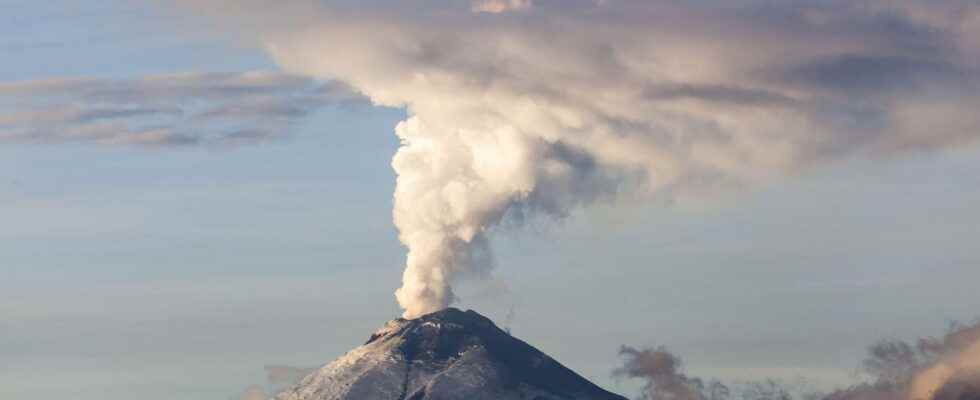Is it possible to predict an eruption? If this is the case in the medium term, it is not yet possible to estimate the precise date. The number of parameters to consider is indeed enormous. But research is progressing, in particular thanks to the study of faults induced by the injection of magma.
You will also be interested
[EN VIDÉO] Geology of volcanic systems – an invitation to travel Interviews dating from 2009 with Georges Boudon, physicist at the IPGP, and members of the team studying the functioning of volcanoes, from the generation of magmas to eruptions. The vocation of IPGP films is to open the doors of laboratories and to accompany scientists in the world of geosciences. This film is part of a series of 14 short format films which are an invitation to travel from the cosmos to the center of the Earth. Design & production: Medi@terre, IPGP – 2009
Nearly 800 million people live near and under threat from a volcano. Being able to predict, in the more or less short term, the occurrence of a next eruption is therefore of vital public interest. But natural phenomena are complex, and we are still far from understanding them from start to finish. In addition, each volcanic system is unique and the occurrence of an eruption will depend on an incredible number of parameters that are mostly inaccessible to us. If the exact anticipation, to the nearest day, will certainly forever remain an illusioncertain indices can however make it possible to estimate if an eruption is taking shape in the short term.
Quick reminder: how does a volcano work?
To try to predict the occurrence of an eruption, we must first understand how a magmatic system works. It’s all a story of pressure, and balance. It all starts with the generation of a magma, resulting from the partial melting of the rocks of the coat. The origin of this fusion can be diverse, but it is generally linked to a anomaly thermal, decompression, or modification of the parameters physical (as’hydration rocks), which will lower the melting point of the minerals. When magma formsits lower density than the enclosing medium will cause it to rise through the crust through a network of porosities or fractures. Often it will get stuck at a certain depth, where it will start to crystallize. This is called the magma reservoir, which is not a cavity. Rather, it is an environment where the liquid magma is present interstitially, between grains solid.
Under high pressures, the magma contains a certain amount of gas dissolved. The decrease in pressure causes the gases to form bubbles within the magma reservoir. However, the gradual increase in magma and gas in this closed system will slowly increase the pressure in the reservoir, up to the breaking point. This is where the intrinsic properties of the environment come into play, which make each eruption unique and extremely difficult to predict. The point of imbalance will indeed depend on the chemical and physical properties of the magmas (composition, viscosity, percentage of gas, etc.), but also the structure and composition of the surrounding rocks. It is these parameters, which are very difficult to determinewhich will define where, when and how the eruption will take place.
Geologists looking for small clues
This increase in pressure within the magma reservoir, however, generates subtle clues on the surface, that the geologists are trying to detect. It is mainly a deformation of the ground above the volcanic system. Even if the magma is several kilometers deep, the pressure it exerts is considerable and will lead to a bulging of the surface area, but also the generation of flaws. These deformations can be observed thanks to the satellite surface elevation measurements, or thanks to seismometers, which record earthquakes associated with subsoil fracturing. These data provide information on the activity of a volcano, but do not allow to estimate precisely the occurrence of an eruption.
Some geologists are therefore trying to find precise clues to follow the evolution of the magmatic system. This is the case of Craig Magee, University of Leeds, in England. His attention gate on the dikes. The dykes represent kinds of let’s go filled with crystallized magma, oriented vertically. Dykes are created as magma travels through the crust. They can be several tens of meters wide and extend over several kilometers in depth.
During the injection of magma into the crust within a dyke, the pressure will cause the formation of two conjugate faults, which will propagate to the surface by forming the two arms of a V. These very particular faults thus give indications on what is happening in depth. The spacing between these two conjugate faults as well as their extension at depth gives scientists an idea of the depth and thickness of the dyke. The researchers thus know if the magma is close to the surface and how much it is. This information can then be used to build digital or analog models of the evolution of the magmatic system. Current research focuses on the methodology to be applied to increase the accuracy of estimates based on subsoil properties. These indeed largely affect the way in which faults propagate.
Interested in what you just read?
